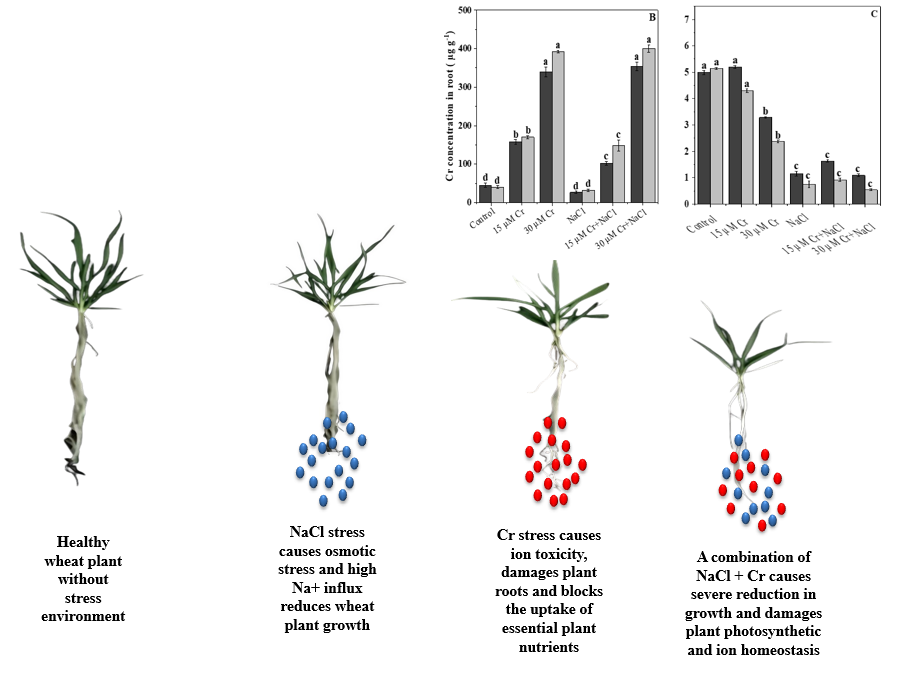
Heavy metal pollution and salinity is a serious ecological concern posing threat to agriculture sustainability and global food security. Chromium (Cr) accumulation in arable lands is of serious concern due to its long term persistent in the soil and strong detrimental impacts on crop yield. Soil salinization is a primary abiotic stress in arid to semi-arid lands which restricts plant metabolism and sustainable growth. A hydroponic study was performed to investigate the effect of salinity (100 mM NaCl) and chromium (15 µM and 30 µM) in integrated and sole form on two wheat genotypes (Sahar and Lasani). In the current experiment, it was noticed that imposition of salinity stress notably reduces plant biomass, chlorophyll contents, RWC, MSI, K+/Na+ ratio and gas exchange attributes in wheat seedlings. The effect of Cr on plant dry matter, physiology and photosynthetic activity varied with Cr concentration. Under low Cr level (15 µM), ceased plant growth and nutritional imbalance caused by salt stress was generally mitigated and this effect is more prominent in wheat genotype Sahar as compared to Lasani. The interactive stress of elevated Cr (30µM) and salt stress results in further reduction in plant biomass, water relations along with stomatal regulation as compared to two stresses (Cr and salinity) alone. The results of the current study may help in understanding the mechanisms involved in sustaining plant growth subjected to different abiotic stresses under the current climate change scenario.
Total file downloads: 25